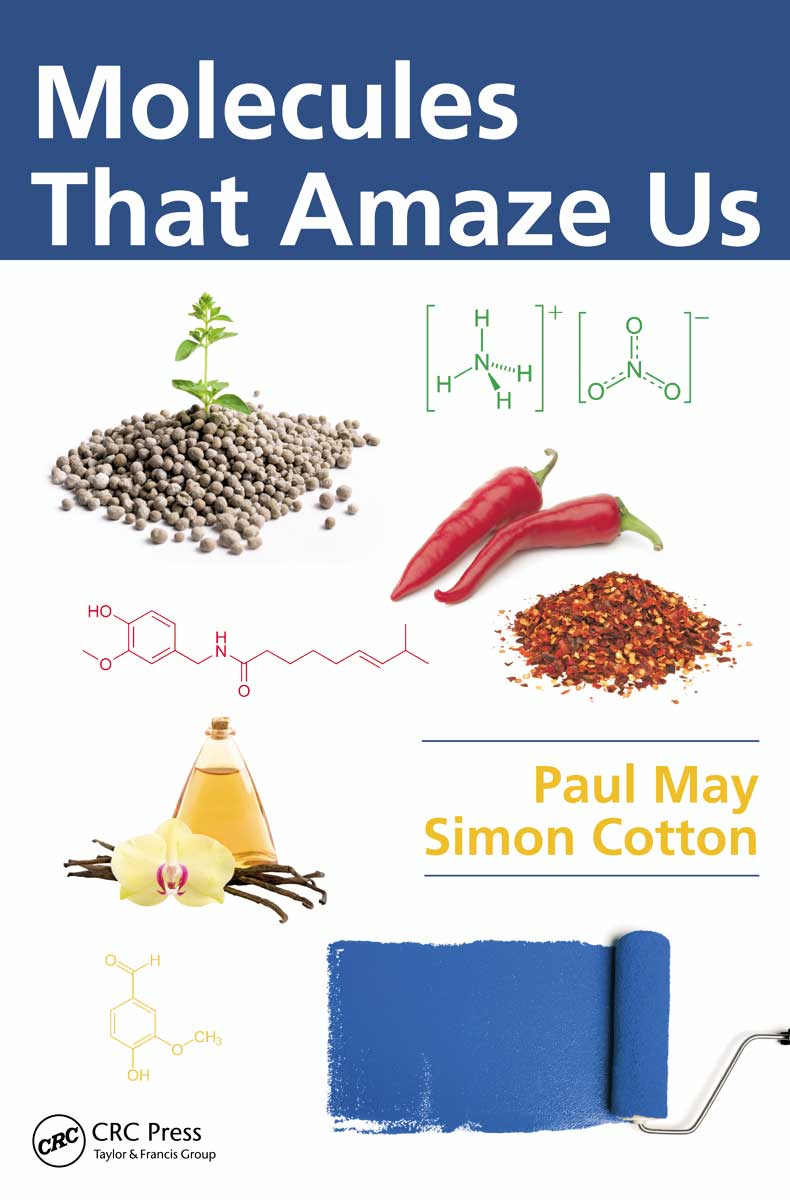Molecules that Amaze Us, by Paul May and Simon Cotton Inspire article
Molecules are everywhere, both inside us and out, but they are more than just common. The ones you will find in Molecules that Amaze Us are incredible.

Did you know that limonene gives odour to many citrus fruits, but that the molecule mainly responsible for the smell of oranges is a very different substance called octanal? Or that capsaicin, the molecule that provides the heat sensation when eating chili peppers, is also a major compound of defensive pepper sprays? And that the same compound has also been used for pain relief for thousands of years since the Mayan civilisation? If you find these examples intriguing (and who doesn’t?), then you shouldn’t miss the chance to read this book.
The stories behind many molecules in this book can provide teachers with dozens of fantastic examples on a multitude of topics – or just catch students’ attention –in chemistry and biology lessons. Metabolism, physiology, medicine, perfumery and gastronomy are some of the contexts in which the molecules in this book play a role. The wide array of those applications makes the book a very good overall introduction to science in general.
Molecules that Amaze Us is an engaging book that provides a balanced mix of entertainment and education. It is written with rigour by experts in each field (not just in chemistry and biology, but also in many related fields such as biochemistry, pharmacology and neuroscience), but the language is very accessible and its pages are visually appealing thanks to hundreds of images, photos and cartoons.
The book builds upon a successful website called Molecule of the Month that was begun by the same authors in 1996 and achieves a very difficult task: keeping both the novice and the expert interested.
Details
Publisher: CRC Press (Taylor and Francis Group)
Publication year: 2014
ISBN: 9781466589605





